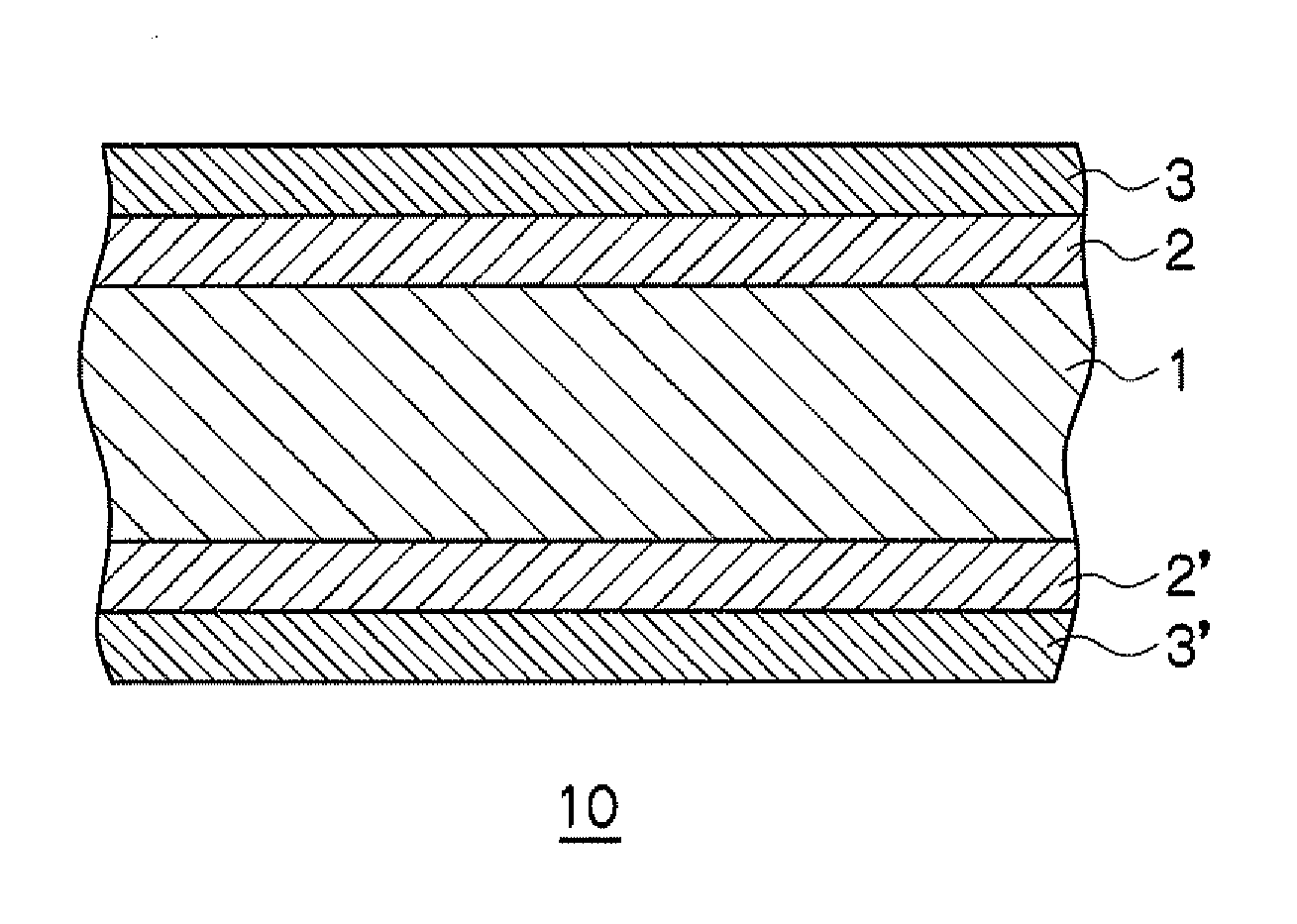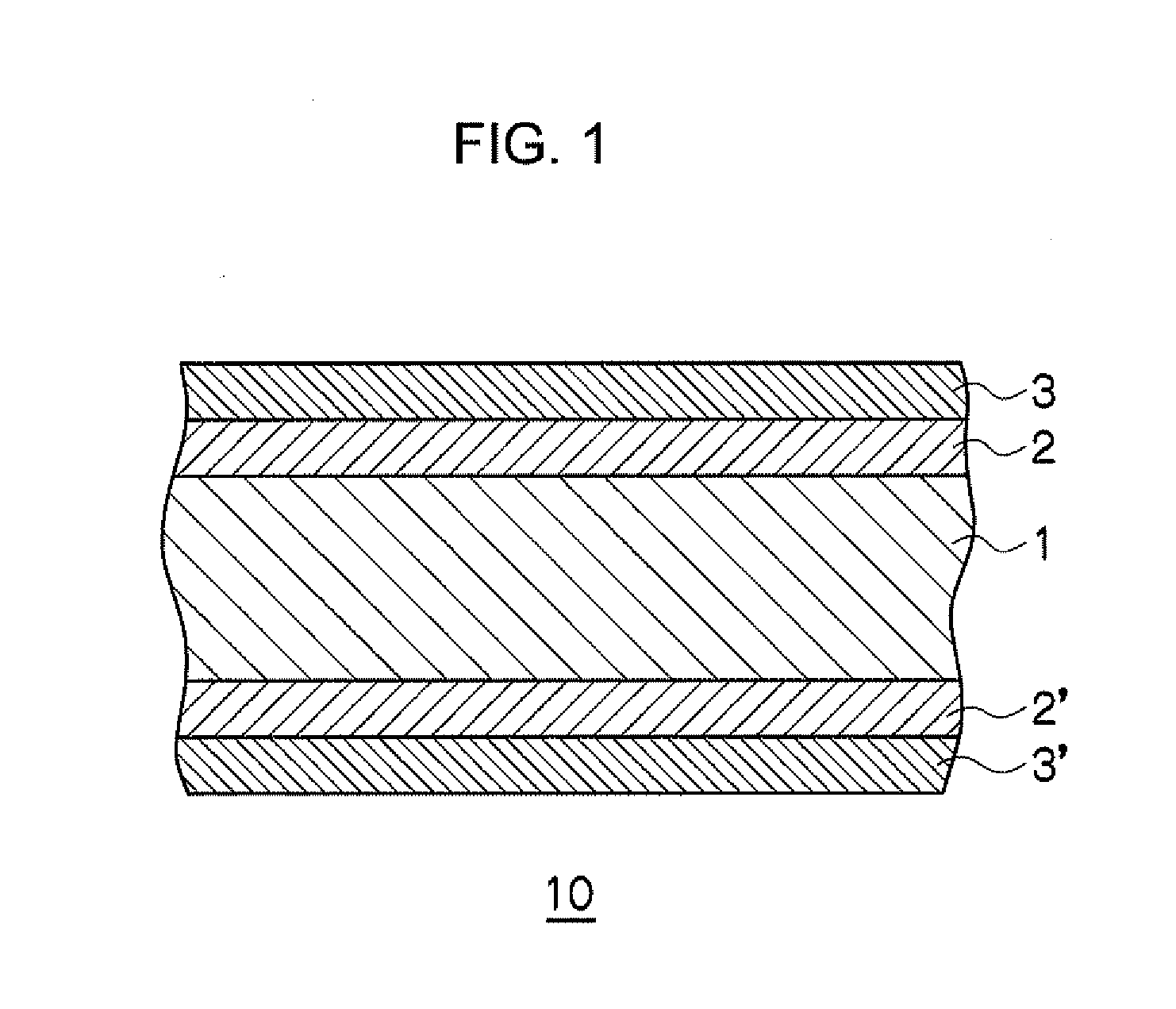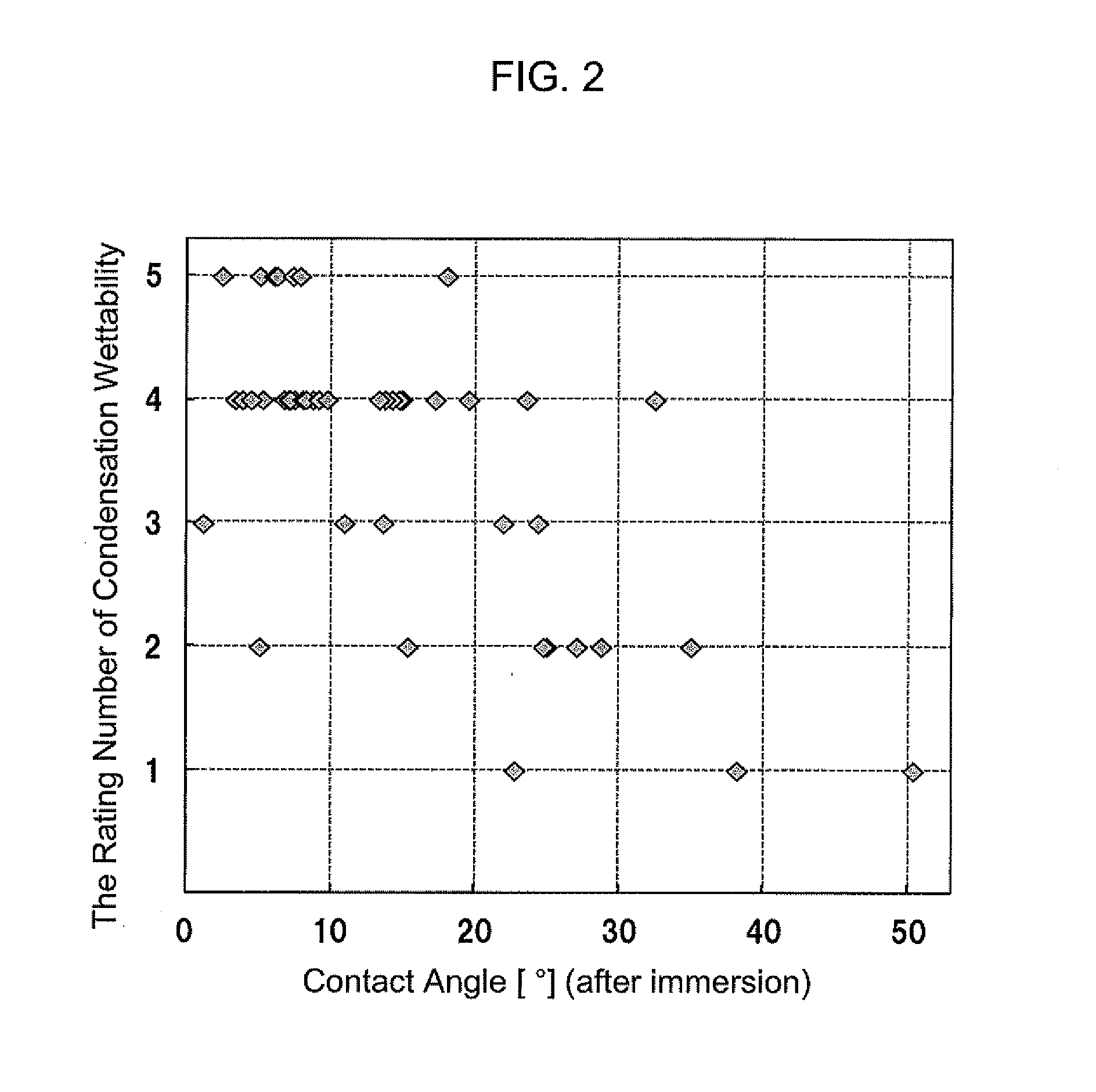Hydrophilic film formed on a surface of a metal material, hydrophilization treatment agent and hydrophilization treatment method
a metal material and hydrophilic film technology, applied in the direction of biocides, lighting and heating apparatus, transportation and packaging, etc., can solve the problems of affecting the hydrophilicity of metal materials, and reducing heat exchange efficiency, so as to achieve excellent hydrophilicity, not impaired, and easy to imagine
- Summary
- Abstract
- Description
- Claims
- Application Information
AI Technical Summary
Benefits of technology
Problems solved by technology
Method used
Image
Examples
example 1
[0078]To cerium (III) carbonate octahydrate (high-purity reagent: Kanto Chemical Co., Inc.), water was added such that the value of cerium (III) carbonate / total amount became 3.0 g / 100 g, and the resultant was pulverized using a sand mill to obtain a water dispersion of cerium (III) carbonate having a particle size of 2.0 μm as a hydrophilization treatment agent. Then, after coating a test material by immersing it in the thus obtained hydrophilization treatment agent, the resulting test material was suspended in a blow dryer having an electric furnace adjusted to 160° C. and heat-dried for 10 minutes to form a hydrophilic film on the test material in an amount of 0.5 g / m2 in terms of dry solid content.
[0079]Here, the particle size was measured by the following method and this is also the same for other Examples and Comparative Examples. Using UPA-EX150 as a measuring apparatus, after diluting the thus obtained hydrophilization treatment agent with deionized water such that the conce...
example 2
[0080]To cerium (III) carbonate octahydrate (high-purity reagent: Kanto Chemical Co., Inc.), water was added such that the value of cerium (III) carbonate / total amount became 3.0 g / 100 g, and the resultant was pulverized using a sand mill to obtain a water dispersion of cerium (III) carbonate having a particle size of 1.0 μm as a hydrophilization treatment agent. After coating a test material by immersing it in the thus obtained hydrophilization treatment agent, the resulting test material was suspended in a blow dryer having an electric furnace adjusted to 160° C. and heat-dried for 10 minutes to form a hydrophilic film on the test material in an amount of 0.5 g / m2 in terms of dry solid content.
example 3
[0081]To cerium (III) carbonate octahydrate (high-purity reagent: Kanto Chemical Co., Inc.), water was added such that the value of cerium (III) carbonate / total amount became 3.0 g / 100 g, and the resultant was pulverized using a sand mill to obtain a water dispersion of cerium (III) carbonate having a particle size of 0.5 μm as a hydrophilization treatment agent. After coating a test material by immersing it in the thus obtained hydrophilization treatment agent, the resulting test material was suspended in a blow dryer having an electric furnace adjusted to 160° C. and heat-dried for 10 minutes to form a hydrophilic film on the test material in an amount of 0.5 g / m2 in terms of dry solid content.
PUM
| Property | Measurement | Unit |
|---|---|---|
| particle size | aaaaa | aaaaa |
| particle size | aaaaa | aaaaa |
| refractive index | aaaaa | aaaaa |
Abstract
Description
Claims
Application Information
 Login to View More
Login to View More - R&D
- Intellectual Property
- Life Sciences
- Materials
- Tech Scout
- Unparalleled Data Quality
- Higher Quality Content
- 60% Fewer Hallucinations
Browse by: Latest US Patents, China's latest patents, Technical Efficacy Thesaurus, Application Domain, Technology Topic, Popular Technical Reports.
© 2025 PatSnap. All rights reserved.Legal|Privacy policy|Modern Slavery Act Transparency Statement|Sitemap|About US| Contact US: help@patsnap.com



